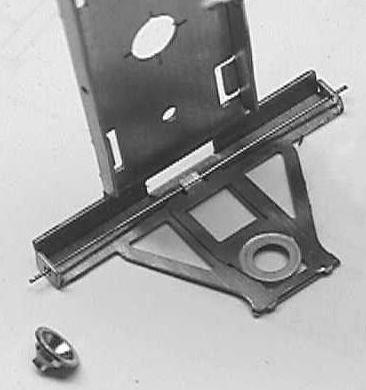
The spring carrier inside a W-iron: the bearing hasn't been soldered to the carrier yet.
|
Bill Bedford Sprung W-irons
words by James Moorhouse
pictures and captions by Russ Elliott
(this article first appeared in Scalefour News 135 )
Back in Scalefour News 128, John Brighton reviewed Bill Bedford's sprung bogies and commented on how surprised he was by their free running. The sprung W-irons Bill produces offer the same running qualities for wagons. This article intends to shed light on a very simple and effective system.
The Bill Bedford W-irons are a true springing system; no pre-tension is placed on the spring, and they are extremely straightforward to put together. Guitar wire is the springing medium, as used in Bill's coach bogies. Wire is included in the kit, but the design enables it to be changed for a smaller or larger diameter for a softer or harder ride respectively, even after the W-irons have been put together using the wire provided.
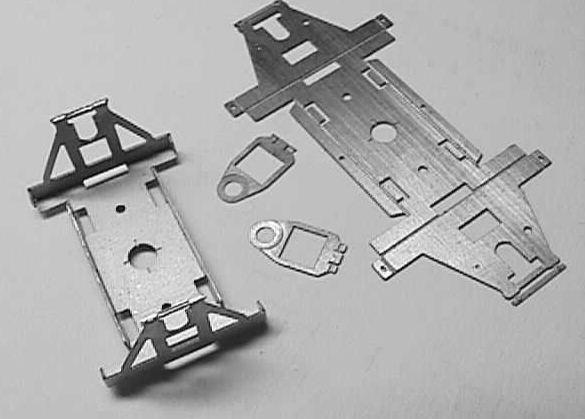 An unbent BR plate with its sprung carriers, plus a bent-up RCH 1907 type.
An unbent BR plate with its sprung carriers, plus a bent-up RCH 1907 type.
The kit is a simple fold-up etch. The folds can be soldered along for extra strength, but this is not necessary. It is advisable however to solder the bearings into the spring carriers.
The 'fingers' on the spring carriers need to be bent back a little in order to thread a length of guitar wire through them. The fingers should be squeezed together gently with a pair of pliers, thus holding the wire. The squeeze applied to the fingers should be sufficient to hold the wire in place without gripping it too tightly, and the squeeze should be consistent to ensure the spring rates and therefore the deflections of the springs are also consistent.
The backs of the cosmetic axleboxes need to be opened out to provide sufficient room for the bearings to move freely up and down inside them. I just drill out a hole above the existing one and open the rest out with a scalpel. I suppose using a mini drill and a dental burr would make for a neater job, but nobody will see it anyway.
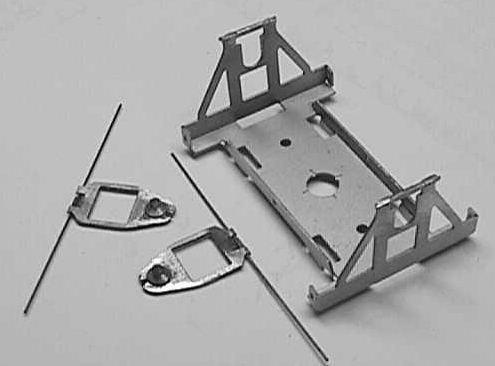
I realised only after I took this picture that its components aren't supposed to go together! Here's a RCH 1907 type with some spring carriers for a BR plate. The important thing is to make sure the wire is straight.
|
The simplicity of the Bill Bedford W-iron enables wagons to be sprung relatively quickly. It is certainly as easy as applying rocking W-irons, which, in my opinion, are out of date. A number of patterns are available, RCH, BR, BR plate and more. I shall be using this system for all my four-wheeled wagons as it is so very simple and functions like the prototype, because the designer has paid close attention to the prototype itself.
|
The outside of the W-iron: James files off the end pips of the waisted bearings, to provide adequate moving clearance within the axlebox.
|
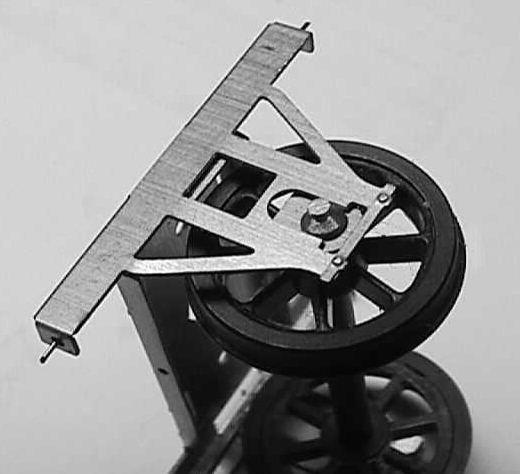
|
|
These W-irons don't move, so fitting tiebars between them is a lot easier – here's a pair for a Parkside Grampus.
|
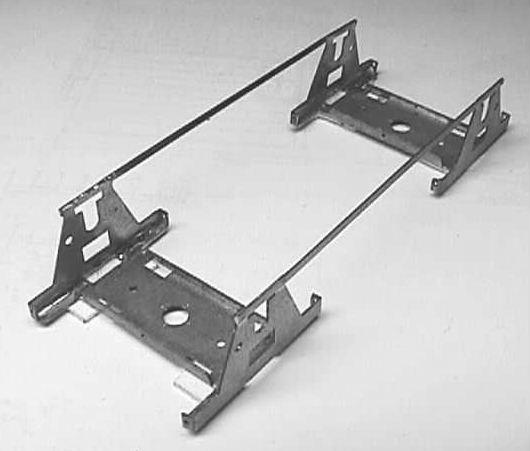
|
|
Think ahead with your brake gear: space can be at a premium, and a bit of filing of the 'legs' of the W-irons will provide clearance.
|
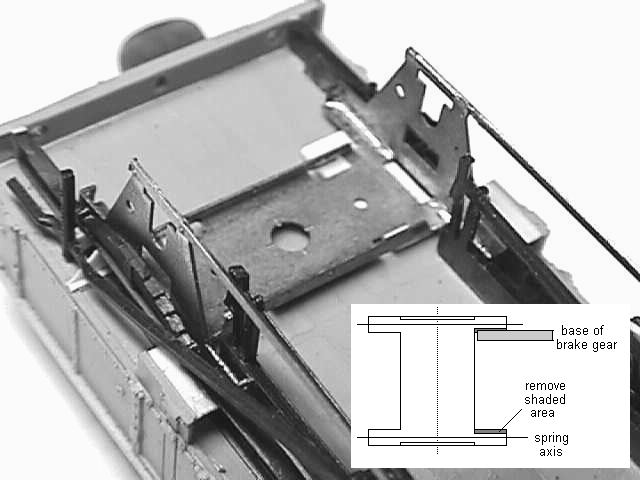
|
|
Wagons with wheels very close to the headstocks may require the 'short span' RCH 1907 type, but this Ratio Iron Mink has room for the longer span type. Be aware of the need for room between the ends of the W-iron spring and any sprung buffer tails.
|
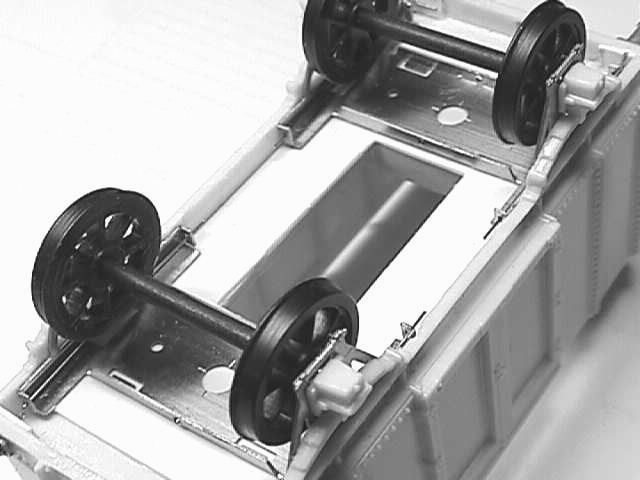
|
|
A Coopercraft open wagon in construction, showing how the axleboxes are opened out to provide room for the bearings to move freely up and down inside them. The underside edge of the axleboxes doesn't need to be cleared for this movement, but it makes inserting the W-irons with their wheelsets a lot easier.
|
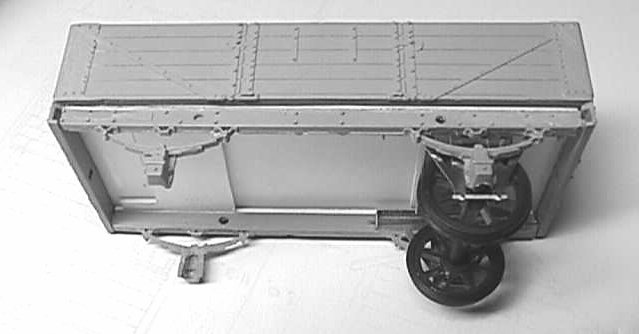
|
© James Moorhouse and Russ Elliott
February 2004
Postscript (July 2012):
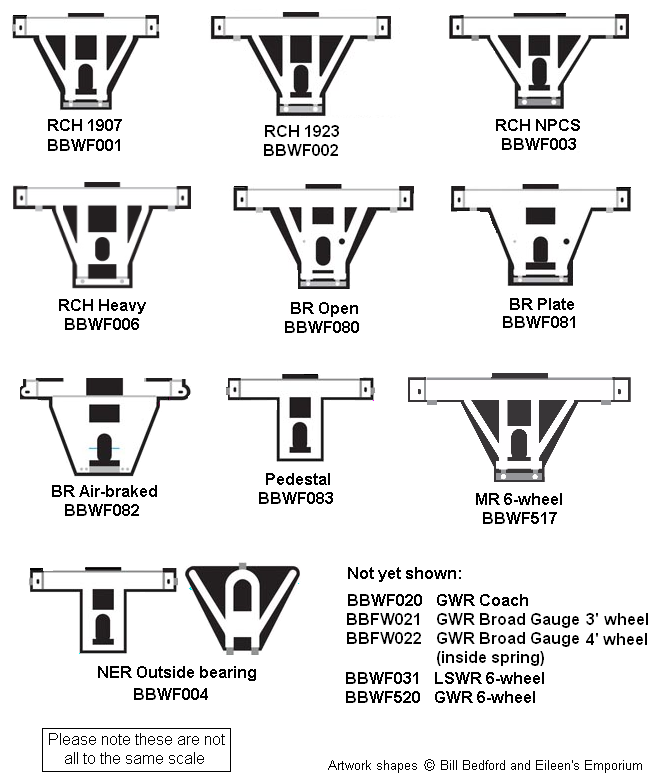
Shown adjacent are some of the styles of Bill Bedford W-iron available from Eileen's Emporium.
The existence and availability of the following types listed in Bill's 2004 catalogue is not currently known:
- MR Coach (BBWF017)
- RCH 1923 for 5'3" gauge (BBWF060)
| Return to top of page | Safety, privacy and cookies |